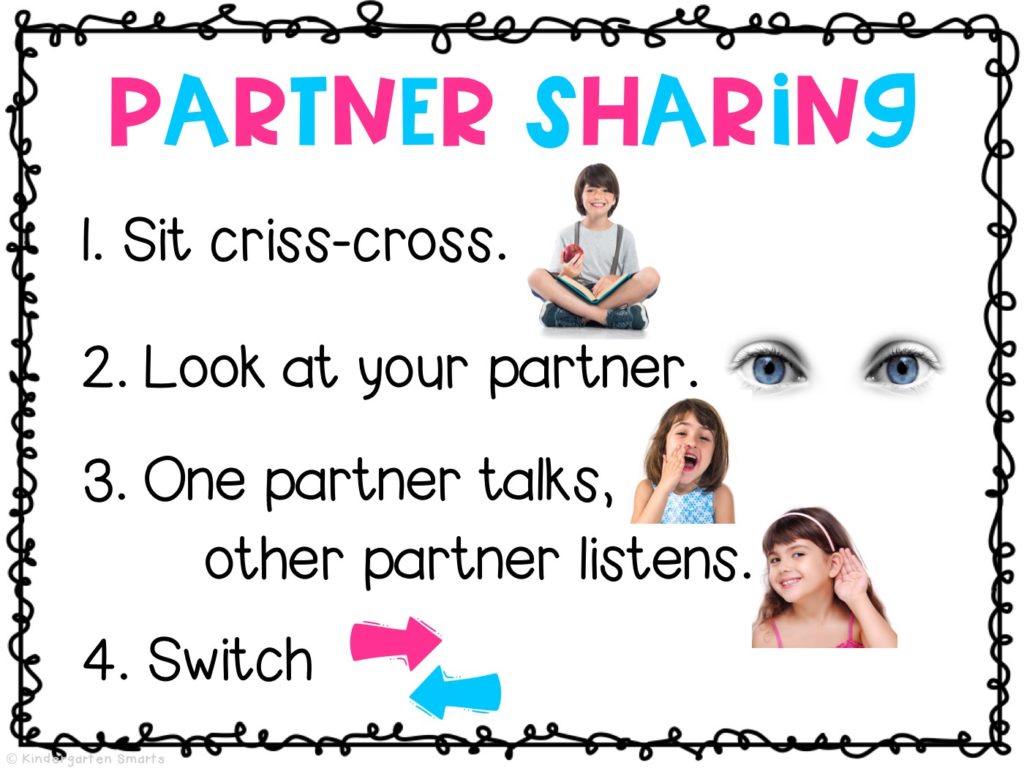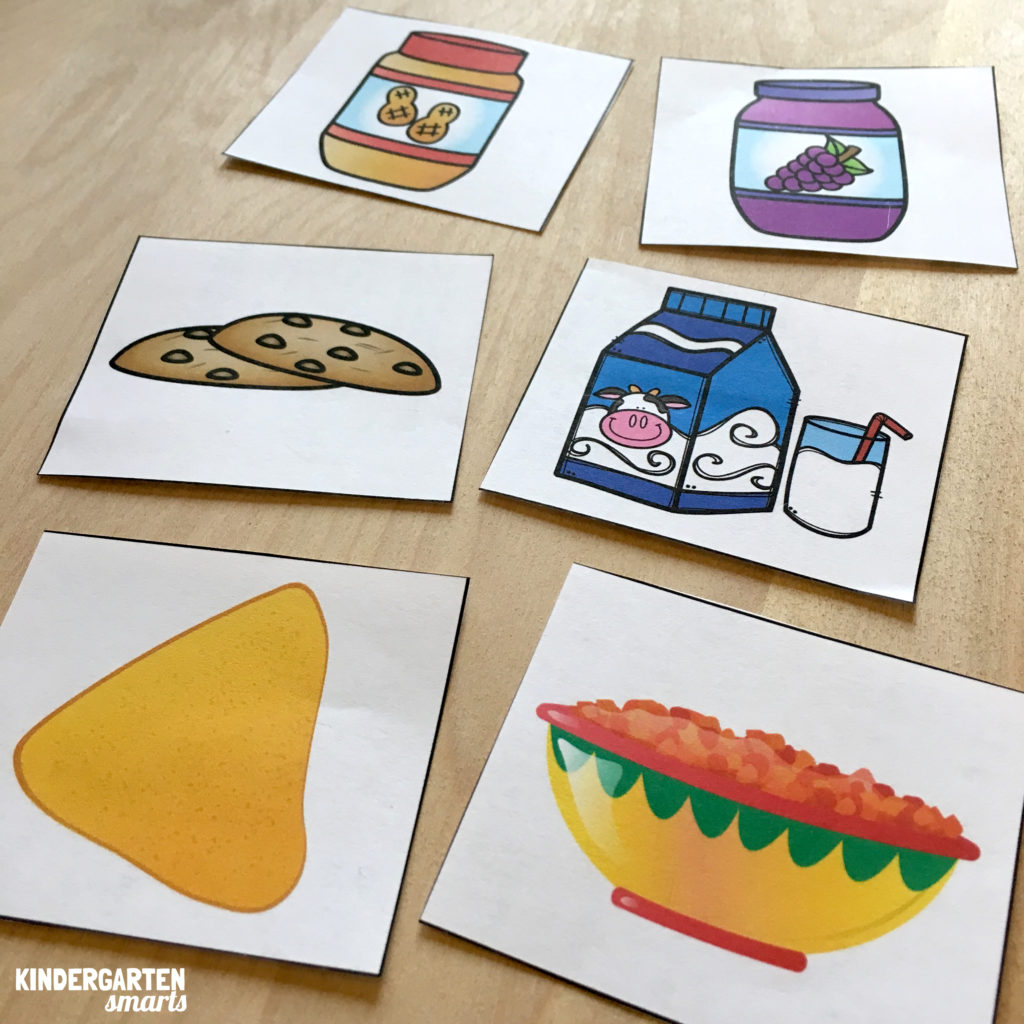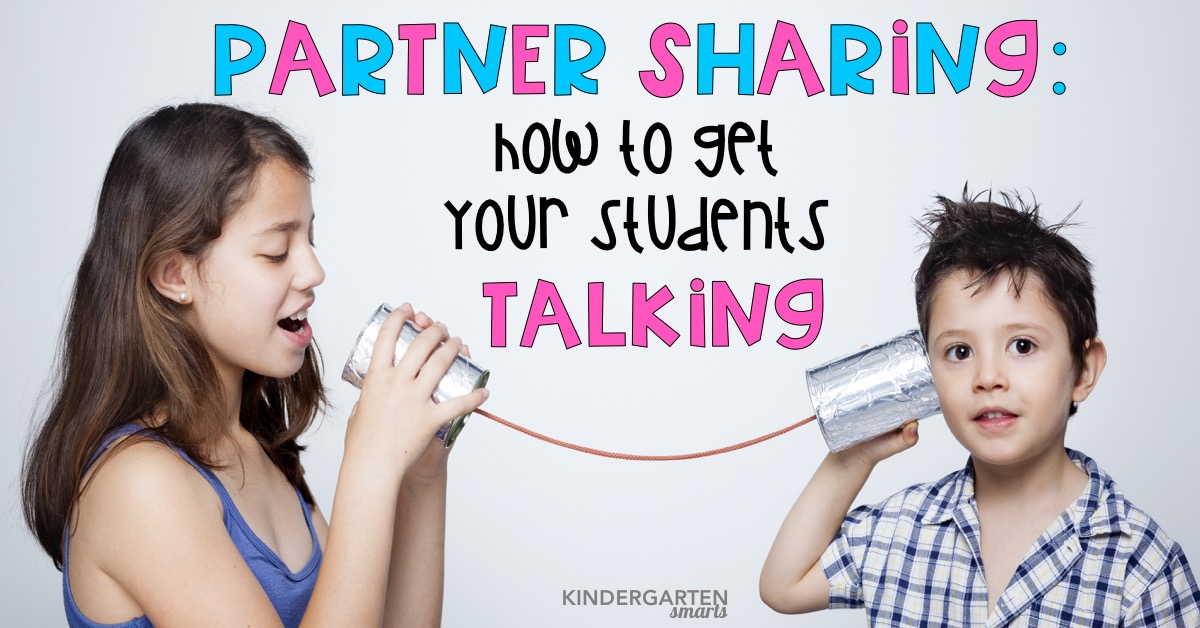One of my favorite engagement strategies is partner sharing. Another term is think-pair-share. Partner sharing is so important because it’s a way for students to think independently and then collaborate their thoughts with a partner. It automatically gets all students engaged with learning and holds everyone accountable.
These are some of the strategies I use in my classroom that has been successful for the first week of school to the last.
1. Start with a visual (anchor cart)
A lot of students are visual learners, and if you are implementing a skillset that they haven’t used before, this really helps solidify the concept of what you are asking them to do. It’s also great because they can refer back to it when they need to. Click here for the Partner Sharing Freebie!
2. Model how it’s done
Kids learn by seeing how things are done first. This is such an abstract concept, it helps to show them. I either pick a student who’s fully capable of being a model or if I have a teacher assistant present, I can use them.
a. I sit on the carpet just like they do. Sitting criss-cross.
b. I point out each step of the anchor chart and ask the students if I am doing what it says to do in order.
For example: “Am I sitting criss-cross and facing my partner?” “Am I looking at my partner?” “Ok, I’m going to talk first, and watch how my partner listens. See how she is looking at me and not turning away?”
c. After we complete a run through of the correct way to do it, we then model how it’s done incorrectly. This way students really understand what’s acceptable and what’s not.
For example, I won’t sit criss-cross. I will put my legs out to the side. I won’t look at my partner and look around the room. I won’t appear I am listening and I’ll interrupt her while she’s speaking. I’ll even pretend to talk to other partners and show how that’s distracting to others.
3. Assigning partners
This sort of depends on how your rug is set up. My rug looks like this:
 I have my kids in the red row turn to the person next to them in the orange row. I have the kids in the blue row turn to the kids in the purple row. For the green row, I have them turn around and face the person behind them. If I have an odd number of students or someone is absent, I make a group of 3.
I have my kids in the red row turn to the person next to them in the orange row. I have the kids in the blue row turn to the kids in the purple row. For the green row, I have them turn around and face the person behind them. If I have an odd number of students or someone is absent, I make a group of 3.
I have always done peanut butter and jelly for my partner names. As a reminder for myself, I always have the red row as jelly (like strawberry jelly) and the orange row as peanut butter. In the purple row, they are jelly (like grape jelly) and the blue row is peanut butter. For the green row, I just alternate PB&J. For visual cues for the students, I print out my reminder cards and tape them to their carpet square. You can download my Partner Sharing Cards here for free!
Now I know what you’re thinking, taping pieces of paper to the rug screams distraction! I have had it distract them for a bit, but then they get used to it and know that the expectations are to leave it alone! Ater a few months pass and the tape peels away from the wear and tear, I usually don’t replace them. I end up getting sick of them and ripping it up! But that doesn’t mean I take away their visual cues. I tape one of the bigger reminder cards in front of the entire row. That way they can still remember by looking at the front row if needed. OR I have also put the big reminder cards in a pocket chart with a colored piece of paper next to them that’s posted near the carpet. This way they can look up for a quick reminder. This is also helpful as most of us move our students around throughout the year and don’t keep them in the same spots.
4. Practice turning
I always do some practicing on how to turn to your partner quickly and how to turn back to the teacher. I say, “Ok go, turn to your partner, and 3, 2, 1, eyes on the teacher!” We do this about 3-4 times. They love doing this as it’s done fast but correctly. Once they get the movement down on where to turn and who to turn to, it makes it go smoothly when the time comes to do it for real.
5. Time to talk: give them a topic
I always introduce partner sharing by starting with something simple. I have them tell their partner their name. I make sure they use a complete sentence. You may have to model the sentence for them.
Here is a run down of what it would sound like:
“Ok, we are going to talk to our partners and tell them our names. If you are a peanut butter raise your hand. If you are a jelly raise your hand. Ok, when we turn to our partner, peanut butter will go first and then jelly will go next. Make sure to use a complete sentence like mine, ‘I am Mrs. Casady.’ Ok, ready? Remember peanut butter is going first! And go, turn to your partner!”
As they start to talk lean in or walk around and listen to how they are doing. Correct anyone that needs help or prompt those who are just sitting there and staring at each other. That will probably happen! 🙂 After about 10-15 seconds, you will get their attention by counting backward, “3, 2, 1, and 0, eyes on the teacher!” Praise the students who are facing forward and are silent. Give carpet points if you do that. That ALWAYS works for me!
Have them try it again with the same topic having jelly go first. Then try again with a new topic. Easy ones I have done are:
- How old are you?
- What’s your favorite animal?
- Do they have any brothers and sisters?
6. Hold them accountable
Call on a student and ask them what their partner said or have them share what they said.
For example, ” Henry, what did your partner say?” or “Mary, tell me what your favorite animal is?”
When you hold them accountable, they know they must partner share, and listen to what their partner is saying. If they can’t repeat what their partner said, then I make them quickly turn to their partner and do it again while everyone listens.
7. Turn simple topics into learning skills
Once you have practiced for a week or so with easy topics to partner share, it’s time to put all this practice to good use!
I love partner sharing during a reading lesson. Some examples are:
- Alphabet practice/first sound fluency: Sharing words that begin with the letter of the day we are learning. “A word that begins with the letter B is ball.”
- A character in the story: sharing who the characters are. “A character in the story is _____.”
- A setting of the story: sharing where the setting is. “The setting in the story is ______.”
- A key detail in the story: sharing with your partner something that happened in the story. “A key detail in the story is ____.”
Ideas for a math lesson:
- Number sense: “Show your partner how to represent the number 4.” (I would encourage them to use a white board for this)
- Greater than/less than: “Tell your partner which number is greater than/less than.”
- Addition or subtraction: “Tell your partner how you solved the problem.” (this gets into strategies and which one they used)
Ideas for a writing lesson:
- Sequential writing: “Tell your partner the steps you take to get ready for school.” or “Tell your partner the first thing you do before going to school.”
- Informational writing: “Tell your partner a fact about a polar bear.”
- Narrative writing: “Tell your partner something you can do outside.”
Ideas for summing up the end of a lesson:
- Summarizing a lesson: “Tell your partner what we learned today.” or “Tell your partner 1 thing you learned.”
- Reinforcing an objective: For example, the objective was ‘I can find the characters in the story.’ So I will refresh their memory without giving it away. I will point to any visuals we learned during the lesson and talk about what we did. This usually gives them a jump start with their ideas on how to sum up what they learned. I usually give them a sentence starter such as, “today we learned about _______.” This is a great way to end the lesson and give them ownership of what they are learning. I then call on a student (who I have heard saying it correctly) to share with the whole class what we learned today.
IN SUMMARY….
As you can see there are so many great ways to use this engagement strategy. Make it a part of your daily routine so everyone is learning and participating! Set the ground work early and make sure to model, practice, and listen in! Even the last week of school I am walking around the carpet listening to what they are saying. It is a great way to assess their learning and know if they are actually getting it! Don’t be afraid to lose control because if you establish the rules, are consistent, and use the anchor chart they will love it. So, get those kids talking!
Join the newsletter
Sign up for exclusive freebies and teaching tips here!







Thanks, loved the freebie visuals. My kids love turn and talk but visual charts are always great reminders to make it better!